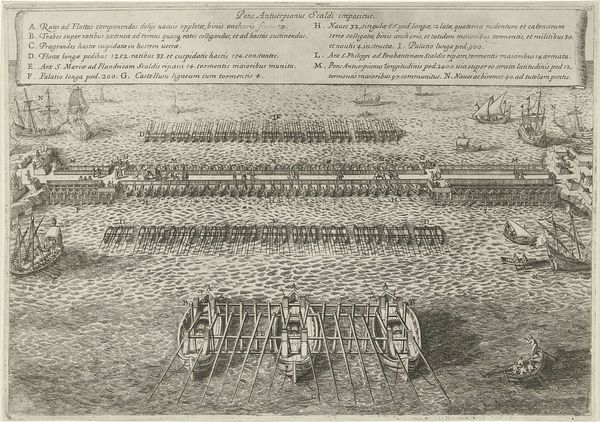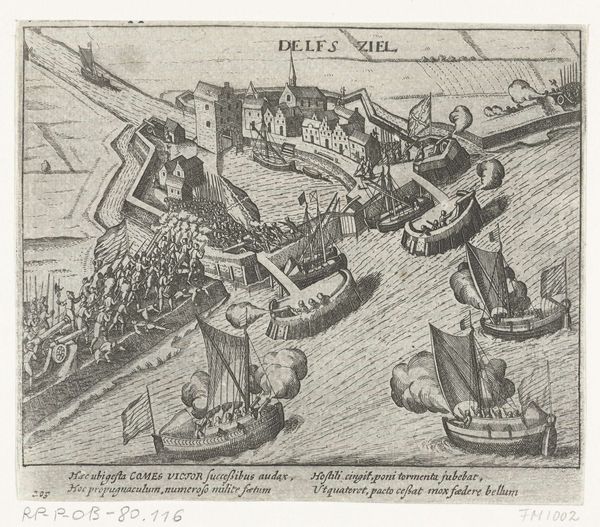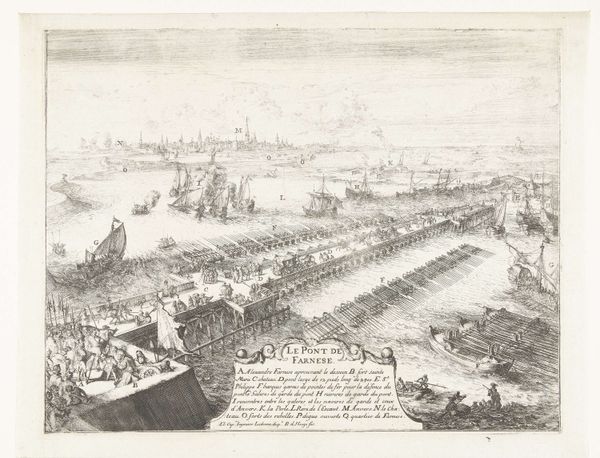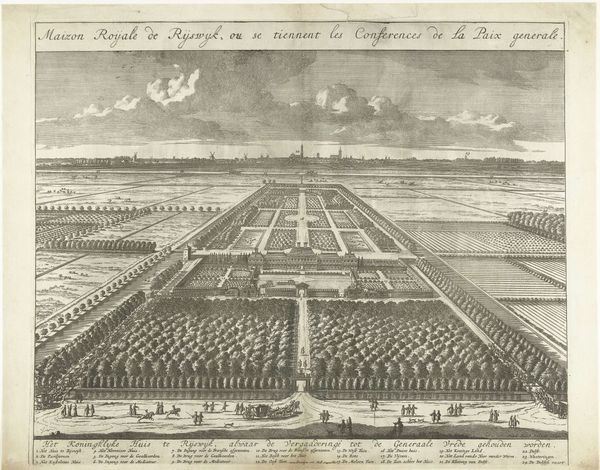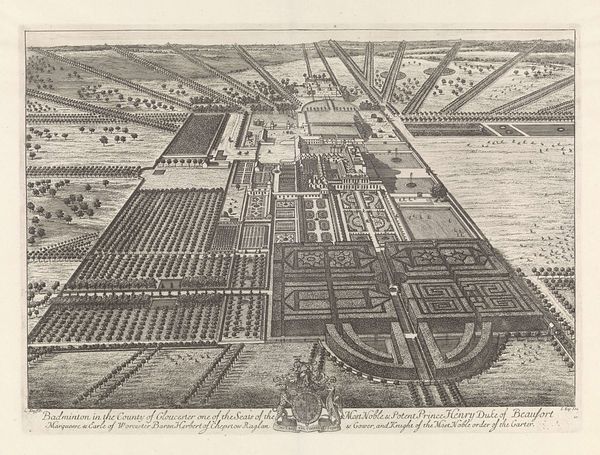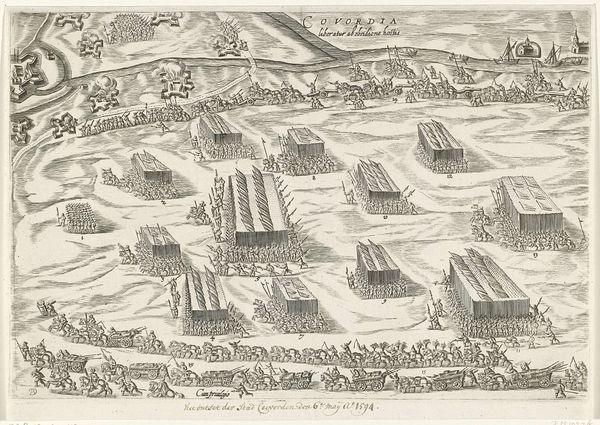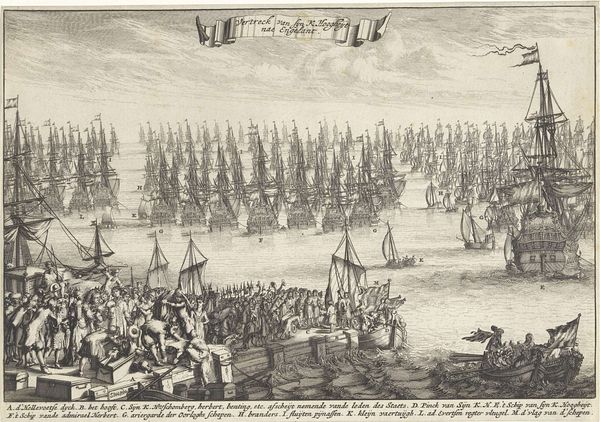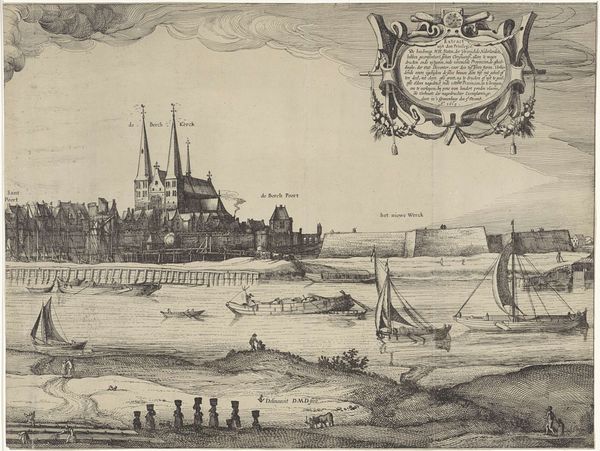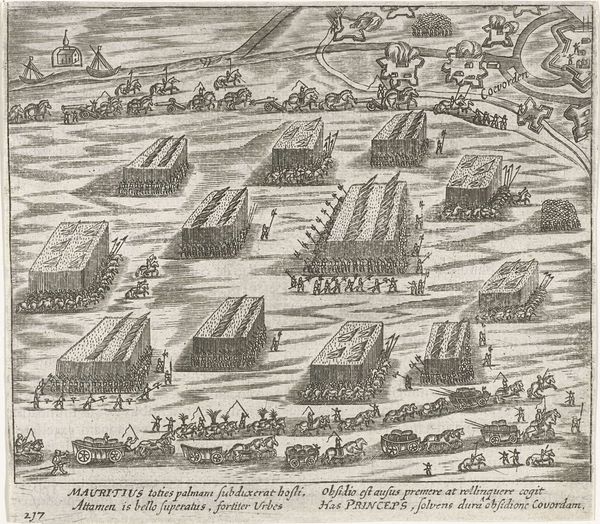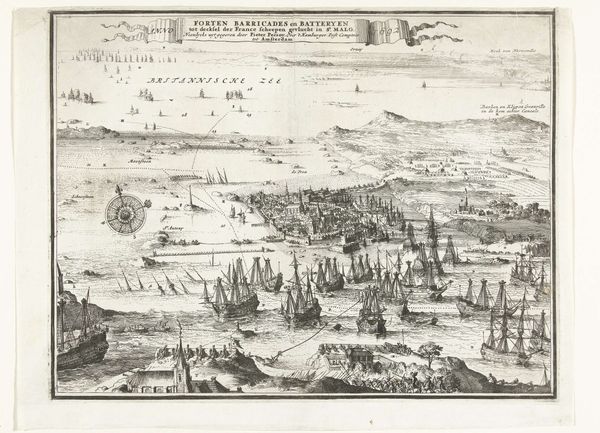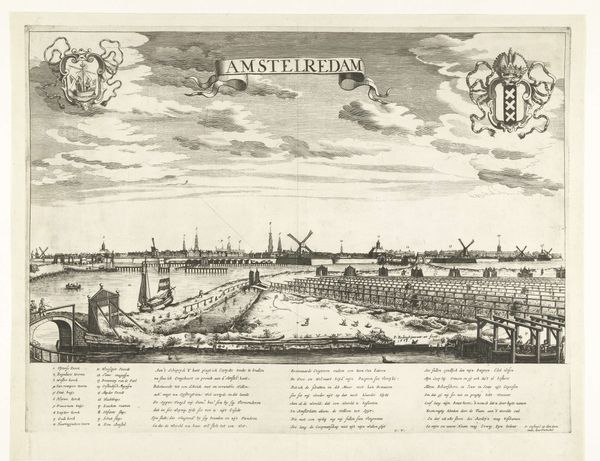
print, engraving
#
baroque
# print
#
landscape
#
cityscape
#
history-painting
#
engraving
Dimensions: height 215 mm, width 272 mm
Copyright: Rijks Museum: Open Domain
Editor: Here we have an engraving, "The Ship Bridge in the Scheldt, 1585," made between 1649 and 1651, currently held at the Rijksmuseum. It depicts what appears to be a siege or blockade using a bridge of ships. The detail is quite striking, but the overall mood is...imposing. What do you see in this piece? Curator: Beyond the immediate depiction of a naval structure, I see a potent symbol of power and control. Consider how bridges themselves have always been symbolic-- connectors, but also points of dominion. This "ship bridge" amplifies that symbolism. What meanings resonate with you when you see this unusual construction? Editor: Well, it looks like a temporary solution, a kind of imposed order upon the fluidity of the river. Almost arrogant, building a road on water! Curator: Exactly! It is imposition, literally stated in the inscription "Pons Antwerpianus Scaldi impositus." Think about what that imposed structure *means*. It visually declares: "We control this waterway. We are here to stay, defying the natural flow". That defiance, that control… where does that connect within the historical and cultural memory? Editor: It speaks to the Dutch Golden Age's ambition, maybe? And the constant struggle for dominance in trade and territory? The need to overcome natural barriers... Curator: Precisely. Water, in many cultures, symbolizes change, the subconscious, the untamable. By "bridging" it in this way, they attempt to master that which is inherently uncontrollable. The image becomes a bold statement of human will, and of technological ingenuity aimed towards conquest. Do you feel the emotional weight embedded in this representation now? Editor: Yes, absolutely. Seeing it as a symbol of dominance rather than just a historical depiction changes everything. I initially saw the detail, but missed the deeper cultural context. Curator: That’s the power of iconography. It helps us decode the layered meanings artists embed in their work, reflecting anxieties, aspirations, and power dynamics of their time.
Comments
No comments
Be the first to comment and join the conversation on the ultimate creative platform.

